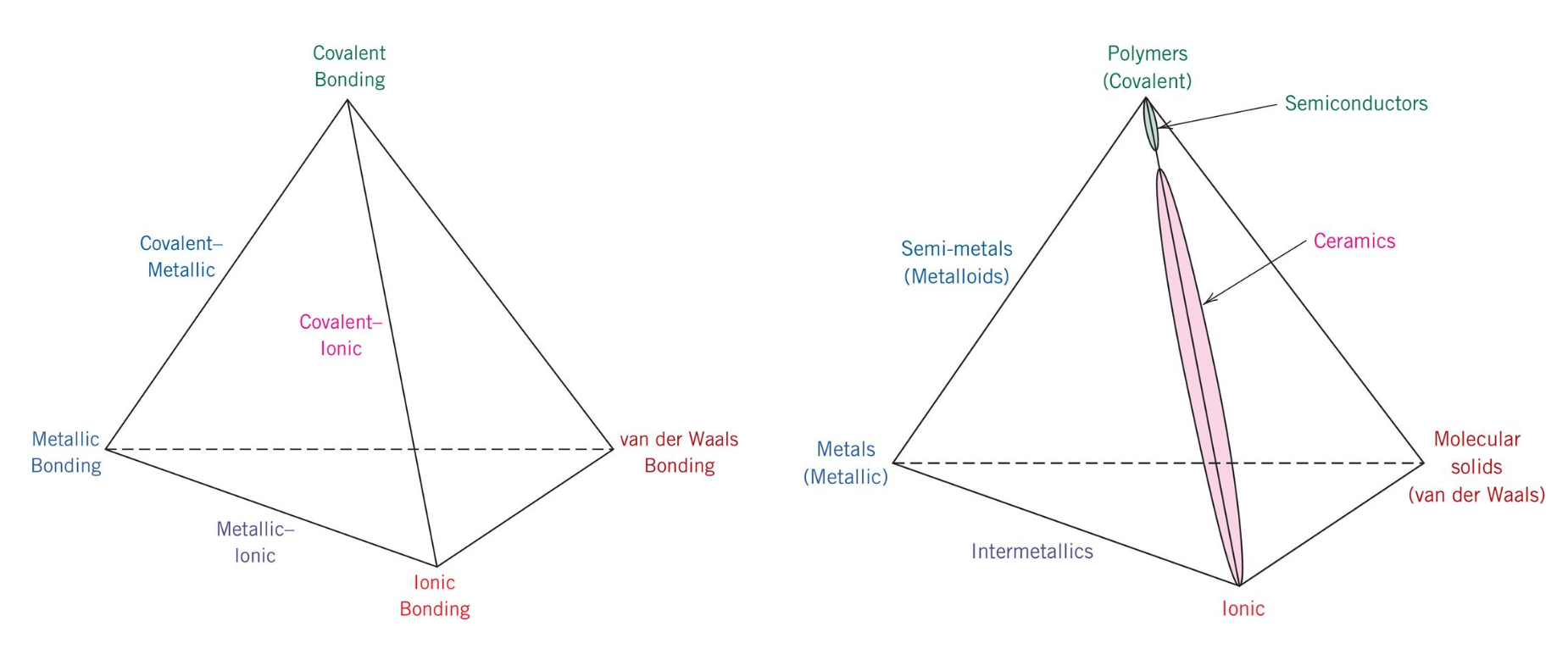Metals are a material made up of metallic elements that are bonded metallically like common alloys.
Comparison of metals ceramics and polymers.
Ceramics are hard and strong but brittle.
The distortion phenomenon under load in ceramics is also reasonably small as compare to metals.
Polymers plastics properties very dependent on whether thermosoftening or thermosetting.
The properties like strength ductility malleability hardness wear resistance and thermal conductivity have varying magnitude for each of metals polymers and ceramics.
Different materials have different properties.
Composites properties very dependent on the particular reinforcement embedded in the matrix binder.
Ceramic balls are also manufactured to substitute steel in ball bearings.
A comparison of four groups of materials.
Many new combinations include ceramic fibers in metal or polymer matrix.
Polymers are strong and tough and often flexible.
It is also resistant to corrosion and permeable for microwaves.
However metals have a lustrous appearance and high thermal and electrical conductivity.
Copper is a soft malleable and ductile metal with high thermal and electrical conductivity.
Polymers can experience fatigue under a repetitive loading.
Concrete and plywood are other familiar composites.
Stress strain curves for metals ceramics and polymers objective we are interested about studying and comparing stress strain curves of metals ceramics and polymers.
Fiberglass a combination of glass and a polymer is an example.
Moreover the strength to weight ratio of polymer materials is higher than that of metals.
Composite materials combine two or more materials.
Normally the components can be physically identified and exhibit an interface boundary between one another.
The metals polymers and ceramics not only have a different physical appearance but also have variations in mechanical properties.
They are generally softer than metals and ceramics and unlike metals and ceramics polymer melting occur over a range of temperatures instead at a specific temperature.
The key difference between polymers and metals is that the polymers are lightweight than the metals.
Primarily differences are due to their different chemical bonding properties homework 1.
Majorly composed of al 2 o 3 aluminum ceramic is a dense ceramic material with excellent thermal and electrical resistance properties.

